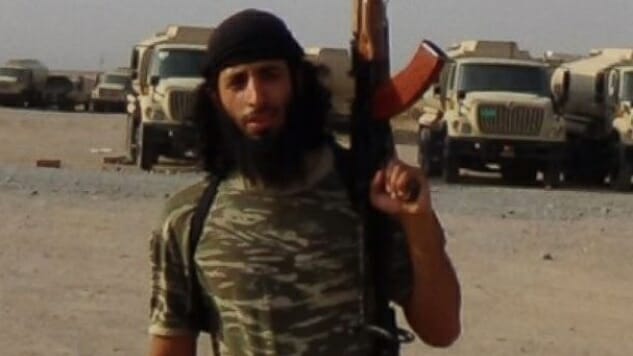Unmasking Jihadi John: Anatomy of a Terrorist

Mohammed Emwazi, known as “Jihadi John,” was a British national, of Somali descent, who became an ISIS terrorist and beheaded people on live video. Now a documentary helmed by Anthony Wonke takes a look at how a shy kid who was bashful about his breath became someone capable of torture and murder.
People with an interest in the subject-in particular, perhaps, how terrorists are seen by people tracking them-will probably learn things from this documentary, with its commentary from CIA and British intelligence officers and archival footage, some of it filmed by the Islamic State. It also features interview footage with family members of victims James Foley and David Haines, and two captives who survived (Nicolas Henin and Federico Motka) that emerges as the most emotionally compelling element of the film; their accounts are striking. The film falls solidly within “stuff you don’t want to know but probably need to” territory in most regards, emphasizing how trauma and desperation lead to some wildly maladaptive coping strategies, how anyone can get caught in the crossfire and how hard it is to successfully capture and prosecute terrorists.
I’m not sure Anatomy of a Terrorist is the right title, though—it sets you up for a deep dive on Emwazi that it doesn’t deliver. The film is ultimately about what he did, rather than how he became who he was, and in the end, you’ll likely feel like you know or understand any other figure in the film as much as or more than Emwazi. Even ISIS leader Abu Bakr al-Baghdadi seems to be as thoroughly investigated as the ostensible subject of the film, with his photograph filling the frame over and over. It’s not that those perspectives aren’t useful; they are. There just isn’t a clearly delineated inciting incident or even a well-defined path to fundamentalist jihad for the stated subject of the film. Yes, intelligence workers did cause the breaking off of two marital engagements, but he was already on watchlists, or an active ISIS fighter, by that time. What I gleaned from the documentary is that Emwazi felt teased about having chronic halitosis, which is also supposedly true of Angelina Jolie, Ben Affleck, Princess Diana and any number of people who have never become celebrities or terrorists but are simply regular people with Altoids in their top drawer. I was waiting for the shoe-drop that seemed inevitable, the profound rejection or betrayal or epic loss that toggles the switch on people with certain cognitive styles and predisposes them to violence. Unless I blinked, it didn’t come.
-

-

-

-

-

-

-

-

-

-

-

-

-

-

-

-

-

-

-

-

-

-

-

-

-

-

-

-

-

-

-

-

-

-

-

-

-

-

-

-








































